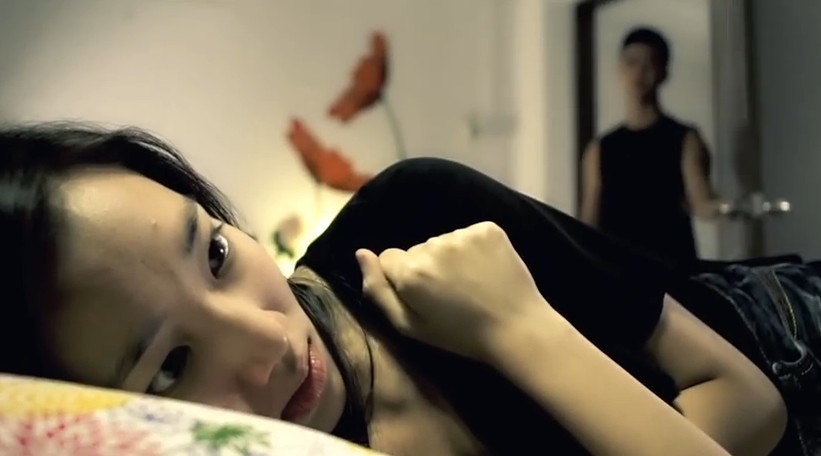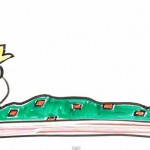Schizophrenia is a mental disorder that may be caused due to hereditary causes or due to certain environmental factors like trauma, stress, or abuse.
As per the kind of symptoms elicited by the patients, schizophrenia is classified into the below discussed five sub-types.

1. Paranoid Schizophrenia
Paranoid schizophrenia is the most common type of schizophrenia. The most distinctive characteristic of paranoid schizophrenia is the occurrence of vivid delusional thoughts about conspiracy or persecution and/or auditory hallucinations. Patients may however be better at engaging in relationships and effectively functioning at their jobs as compared to patients with other types of schizophrenia.Experts are not aware about the precise cause for this, but it is believed that the disease and its symptoms typically have an onset later in life when the patients have attained a good degree of functionality. Successful management of paranoid schizophrenia allows patients to live a life that appears normal.
Individuals with paranoid schizophrenia may not seem abnormal or odd; they may not easily talk about the symptoms of their condition. The delusions and hallucinations are usually based around some distinctive subject; this subject remains fairly steady/uniform over time.The typical behaviors and dispositions of affected people are generally associated to the content in thought disturbances. For example, patients under the impression that they are being wrongly persecuted may become easily hostile and angry.
The abnormal symptoms of a person with paranoid schizophrenia often gets detected by medical experts when there is aggravation of the symptoms due to excess stress in the patient’s life. During such situations, patients may behave in a manner that brings focus onto them, or they may seek the help of others.As patients elicit no noticeable characteristics, diagnosis of paranoid schizophrenia slightly depends on the willingness of patients to discuss their thoughts. Patients with a high level of paranoia or suspiciousness may be extremely averse to talking about their problems with a stranger.
At any point in time, patients may exhibit a wide range of symptoms with regards to severity and nature. Patients may exhibit more disorganized thoughts and disoriented thinking processes during the stage of worsening symptoms.During these situations, patients may experience difficulties in talking logically, recalling recent events, or acting in a coherent and organized manner, in varying degrees of intensity. Family members and friends are often required during such times so that the patient can get professional assistance.
2. Disorganized Schizophrenia
The main characteristic of disorganized schizophrenia is thought processes that are disorganized. Some patients may experience delusions and hallucinations, but they are usually less prominent or less evident. Affected individuals may exhibit substantial deficiencies in their capability to live a normal routine life. Daily activities such as bathing, dressing, brushing, etc. may be absent or considerably compromised.
People with disorganized schizophrenia may also elicit emotional processes impairment. For instance, patients may exhibit actions that may not be correct for the emotional context of a scenario, or they may seem to be emotionally volatile. They may not have the ability to elicit normal emotional responses to events that yield a specific emotional response from healthy people. Medical experts call this as a flat or blunted effect. Patients may also appear to be unusually light-headed or jocular; they may chuckle or smirk at solemn events like a funeral, etc.
Individuals with disorganized schizophrenia may also elicit major deficiencies in their capability to effectively communicate. Their speech may occasionally become completely unintelligible, generally because of disorganization of thoughts. In these instances, the speech will be littered with abnormal use and order of words in sentences as opposed to problems in articulation and enunciation.
3. Catatonic Schizophrenia
The main characteristic of catatonic schizophrenia is disturbances or troubles in motion or movement. Patients may show a considerable amount of increased activity, resulting in a state called catatonic excitement, or they may exhibit an alarming drop in activity, wherein voluntary actions literally stop, leading to catatonic stupor.
People with catatonic schizophrenia may also elicit other kinds of movement problems.They may display stereotypic behavior characterized by repetitive purposeless actions, which often does not result in any kind of productivity. Patients may resist or become immobile to any effort being made to alter their appearance. They may remain stuck in a specific pose, occasionally for prolonged periods of time. This symptom is known as waxy flexibility. Some affected persons may display unbelievable physical strength in resisting any attempt to reposition their stance, even if their pose may appear to be very discomforting for other people.
Persons with catatonic schizophrenia may exhibit abnormal movements of the limbs, or contortions of the face, or may voluntarily take up irregular body postures. These group of symptoms may occasionally be misinterpreted for another condition known as tardive dyskinesia, which is characterized by similar unusual behaviors. Other known symptoms shown by catatonic schizophrenia patients include echopraxia, i.e., copying the movements of others; and echolalia, i.e., repeating the words and sentences uttered by others.
4. Undifferentiated Schizophrenia
Patients may be diagnosed with undifferentiated schizophrenia if they elicit symptoms that are not specific enough or adequately formed so as to be classified as any of the other schizophrenia subtypes.
People with undifferentiated schizophrenia may exhibit symptoms that fluctuate at varied periods of time, leading to uncertainty as far as categorization of the subtype is concerned. Other patients may elicit stable symptoms, but they may not fall under any of the schizophrenia subtypes.
5. Residual Schizophrenia
Residual schizophrenia is characterized by gradual easing of the symptoms such as delusions, hallucinations, or idiosyncratic behaviors, etc. The schizophrenic symptoms are still present but they are of lowered severity levels.
Prognosis of schizophrenia
Just like the symptoms, the effects of schizophrenia can be varied. Some patients may maintain an active social and family life and have successful careers, while others may need institutional care. However, most affected people do not fall under any of these extremes. Most experience waning and waxing of the condition characterized by hospitalizations and additional professional help.
Patients who have achieved a higher level of functioning before the onset of schizophrenia usually have a better prognosis. Women have better functioning outcomes as compared to men, as also patients without any structural brain abnormalities.Schizophrenia that commences in childhood or adolescence has a poorer prognosis.


